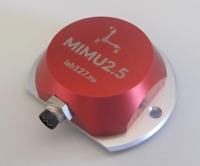|
|
|
|
About us
Lab127 is the R&D team spinned off the department of information
and measurement systems and physical electronics of the Petrozavodsk State University.
The core staff consists of ~10 FTE researchers, five of them have PhD degree.
The directions of R&D can be defined in four terms:
The name of Lab127 was inherited from the number of the laboratory located in PetrSU. The first mention of Lab127 was registered at thermo.karelia.ru in 2000. In 2008 the RealTrac technology development was started with investment from RTL-Service LTD. In 2012 the first revenue from the technology sale to coal mining industry in Russia took place. In 2013 the RealTrac won the first prize in the EvAAL-2013 localization contest (Madrid, Spain). In 2015 a group of core developers led by Alex Moschevikin left RTL-Service and organized the small innovative company Nanoseti LTD. Since 2016 the development of inertial navigation products goes in partnership with GS Group and within the support of the Ministry for Education and Sciense of Russian Federation and PetrSU and under International IRA/SME projects with Hahn-Schickard and Indyon GmbH. GeRDA - Automation of geochemical tests
In 2019 year the Geochemical Research and Documentation Assistant (GeRDA) was developed in collaboration with MEFFA LAB OY. The setup includes remotely controlled X-ray fluorescent analyser, one or two photo cameras, and CNC table. The GeRDA can be used for:
The GeRDA based on Olympus Vanta XRF Analyser. Inertial navigation technologies

Nanoseti LTD develops hardware, algorithms and software for inertial navigation and fuses these solutions into local positioning systems. A small autonomous selfcalibrating multisensor inertial module MIMU2.5 was introduced in 2017. It consists of 5 MEMS sensors (3-axes accelerometers, gyroscopes and magnetometers), pressure and temperature sensors. It can be used for pedestrian and automotive dead reckoning in real time, for obtaining 3D-orientation of an object and for analisys of its motion. MIMU2.5 significantly outperforms the characteristics of MEMS sensors in modern smartphones, especially in the stability over time and over temperature variations. Video demonstration of automotive tracking. The trajectory is calculated in real time. Only acceleration and rotation rate data are used for inertial navigation. MIMU2.5 module can be installed on any wheel vehicle: car, truck, wagon, etc. Local positioning technology
Lab127 team has been involved in R&D of wireless technologies applications since 2005. The developed Realtrac technology for voice and data communication and positioning was based on NanoLOC (IEEE 802.15.4a) standard. Mobile and anchor nodes were equipped by a voice subsystem. The localization server used infomation on RTT ToA and RSS measurements and inertial sensors data. Video presentation of RealTrac technology, (c) RTL-Service, 2015 |
|
Please contact
Alex
P. Moschevikin for any question or proposal |
The use of any part of this site content
without permission
is forbidden! |